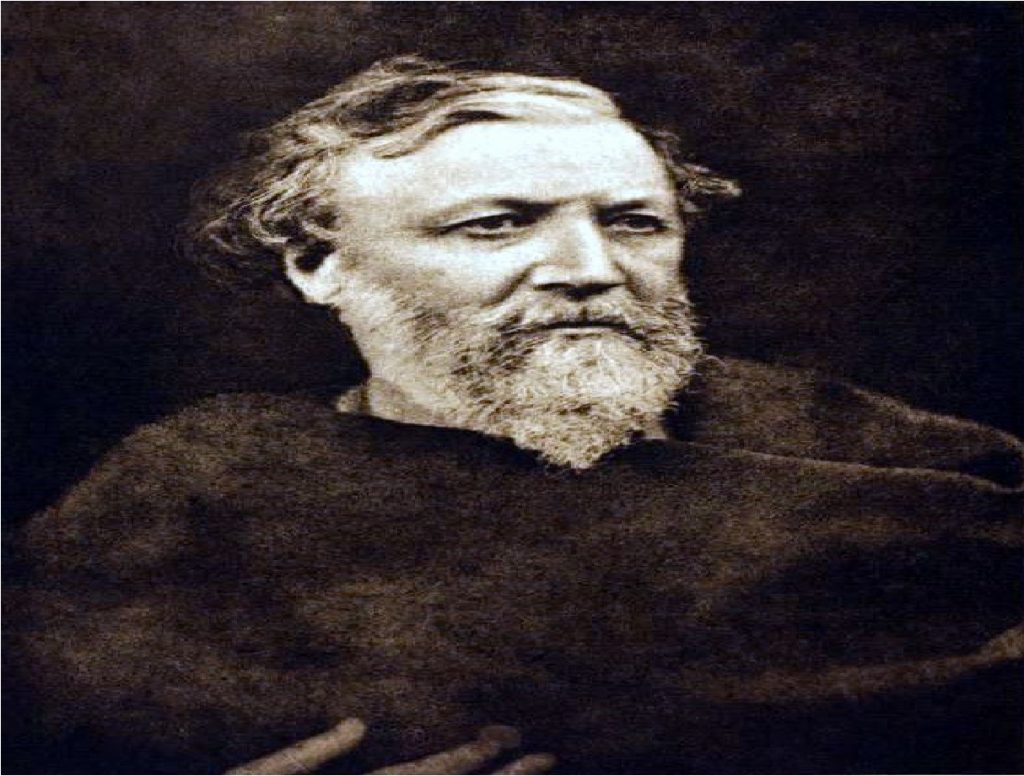Robert Browning who is praised for his handling of the dramatic monologue is a dramatic, philosophical and metaphysical poet. He is the most ambitious and successful writer of the dramatic monologues in English. His super creation “Men and Women” contains 50 dramatic monologues which are written in blank verse. His dramatic monologue symbolizes the moral crisis in the soul of characters.
As he wanted to expose the human mind and heart, so he found his ideal medium in the form of “My Last Duchess”, “Rabbi Ben Ezra”, “Andrea Del Sarto”, “Fra Lippo Lippi”, “A grammarian’s Funeral” and “Porphyria’s Lover”.

Table of Contents
What is a Dramatic Monologue?
The poem which has a speaker and silent listener or listeners may be called Dramatic Monologue. The speaker reveals his thoughts in front of silent listeners. The listener remains silent all through the poem but infers his presence from what the speaker says. The speaker’s utterance is a response to an occasion or event of crucial importance in his life.
Robert Browning Dramatic Monologue Examples
In Browning’s dramatic monologues, generally, we find there is a single speaker. For instant, the poem “Andrea Del Sarto”, presents a single speaker Andrea, where we feel the presence of the lister, Lucrezia. In the poem “My Last Duchess”, Duke who is a sixteenth-century nobleman of Italy, is the speaker and the only silent listener is the emissary who has come to him to negotiate for his second marriage with a count’s daughter. In “Fra Lippo Lippi”, Lippo speaks to several watchmen. Again in “A grammarian’s funeral”, a disciple of the Grammarian speaks to the other members of the funeral party. In all these poems, we find a single speaker and he speaks in a dramatic situation. These speakers are not actually to be identified as Browning himself. They are mere characters, as Hamlet or Macbeth are romantic characters, not Shakespeare. Each of the dramatic monologues of Browning has an abrupt and arresting. The poem “My Last Duchess”, starts with a dramatic suddenness:
“That’s my last Duchess painted on the wall
Looking as if she were alive:”
The poem “Andrea Del Sarto” has a dramatic beginning clearly:
“But do not let us quarrel any more
No, my Lucrezia, bear with me for once”
Here Andrea directly addresses his wife and seeks a compromise. Fra Lippo Lippi on the other hand, directly threatens a watchman saying that he will be hanged for his rude behavior. In “A Grammarian’s Funeral”, the speaker often gives direction to the listeners. Thus these poems show between the speakers and the listeners.
Browning’s dramatic monologue provides an understanding of the character of the speaker. For instance in “Porphyria’s Lover”, we find the psychological makeup of the speaker. He is afraid that the blissful moment of love will pass away. So he kills his beloved. Yet he suffers no sense of guilt, as he says in this poem:
“And all night long we have not stirred
And yet God has not said a word!”
The murder reminds us of the murder of the Duchess by the Duke in Browning’s “My Last Duchess”. The Duke says:
“This grew, I gave command
Then All the smiles stopped together”
Porphyria’s lover is not as cruel as Duke. He just wants to get his beloved permanently. In “Andrea Del Sarto”, we can see an uxorious husband whose love for his wife destroys his career as an artist. Similarly in “Fra Lippo Lippi”, we find a monk who is morally loose. Thus all those dramatic monologues successfully concentrate on the personality of the speaker.
Regarding Browning’s exceptionally brilliant use of blank verse, Arthur Symons rightly says that “He is perhaps the greatest master in our language” in heroic couplets. He maintains a balance between his style and content. The language and tone of “Porphyria’s Lover”, is equally remarkable for its simplicity and naturalness. Porphyria has murdered his beloved. But he narrates the event so naturally that reader does not hate the crime, as he says in this poem:
“No pain felt she
I am quite sure she felt no pain”
Realistic and beautiful nature-picture is another striking feature of Browning’s dramatic monologues. These two are not taken from a single country. As he took his character from various ages and various countries. Similarly, he picked up his nature scenes and landscapes as background for human thought and emotion. For example, the description of the lace where the Grammarian is to buried heightens. The speaker says in the following ways in the poem:
“Here’s the top peak…..
Bury this man there?”
In light of our discussion, we can easily say that Robert Browing is very successful in handling the form of dramatic monologue in his poems. Almost all the elements of successful dramatic monologue are presented in his poems. Robert Browning’s dramatic monologues are thoughtful, confessional, and self-revealing.
Read More Literary Writings:
Tennyson as a representative poet of his age or Victorian Period
Treatment of Nature in the poem of Tennyson
Michael by William Wordsworth as a tragedy of human life


